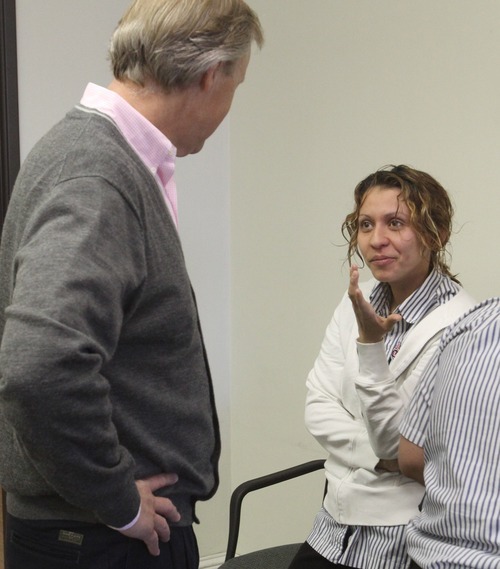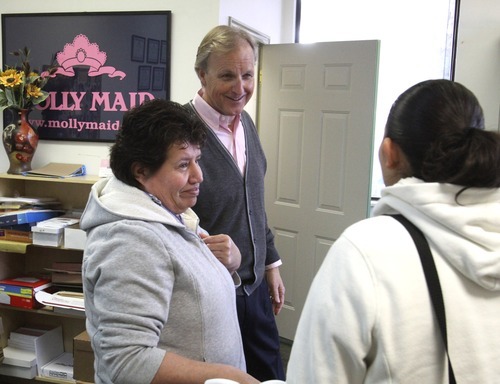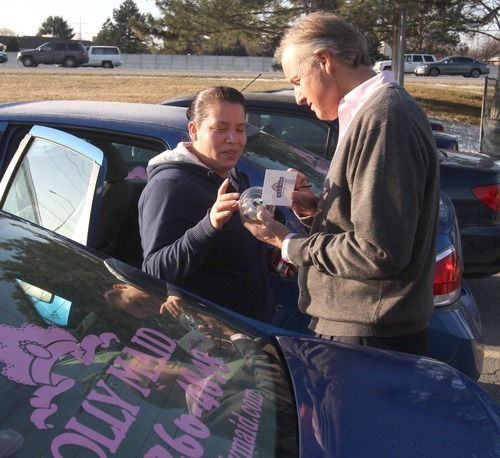This is an archived article that was published on sltrib.com in 2012, and information in the article may be outdated. It is provided only for personal research purposes and may not be reprinted.
Franchising — the act of launching a small business by buying into a proven business model such as Carl's Jr. or Big O Tires — is expected to grow in 2012 and to play a part in private-sector job creation that could aid the overall economy.
After three years of decline, the number of franchise establishments is expected to increase nationally by 1.9 percent in 2012 — adding 13,928 new locations to an existing 735,751 units, a recent report projects. In 2011, franchises employed 7.9 million workers, a pool that is expected to increase by 168,000 mostly entry-level jobs, according to the 2012 Franchise Business Economic Outlook by IHS Global Insight, a forecasting and financial analysis firm.
The report also forecasts that franchises will fuel a 5 percent growth in economic output this year, adding $37 billion to last year's total of $745 billion. In 2011, franchises accounted for $439 billion of the U.S. Gross Domestic Product, an amount expected to increase in 2012 by 4.8 percent, or an additional $21 billion.
Steve Caldeira, president of the International Franchise Association (IFA), views franchising as a leading indicator of where the economy is headed.
"Franchising is poised for a modest rebound in 2012," Caldeira said in a recent email. "So while that's good news for franchisors and franchisees after three years of declines … the industry could be growing even faster."
Franchises run the gamut, from restaurants and hotels to health care companies and automotive stores. And most franchises fall within the ranks of small business, employing fewer than 500 workers.
Stan Nakano, Utah's district director for the U.S. Small Business Administration, said that in fiscal year 2011 his office provided $29 million in loan guarantees to 57 franchises — a sizable amount but still less than 10 percent of its total loan volume.
"[Franchising] is a good alternative for somebody who might have limited resources," Nakano said. "You have guidance in the startup phase, and there's a business model that has already proved to be successful."
In mid-January, Alpine resident Alan Green celebrated his one-year anniversary operating a Molly Maid franchise in Murray. He employs 20 workers who provide residential cleaning services to 320 regular clients.
The former news photographer, documentary filmmaker and marketing director faced a layoff in 2008, and at the age of 58 found that re-inventing himself in a tough job market posed a daunting challenge.
Having previously owned a frozen-yogurt franchise and a one-hour photo agency in Southern California, Green sought assistance from a business broker and in August 2010 learned of a Molly Maid franchise that had operated for four years and whose owner wanted out.
By that November, Green's offer had been accepted, and by January 2011, he was trained and had the franchise operating again.
The Molly Maid franchise met two key goals for Green — to find a business that would not get quickly outdated by technology, and to have something he could turn around, build up and then "not have to be there every day."
According to mollymaid.com, its business model took root in the United States 25 years ago, and today the company has more than 450 franchises nationwide and more than 180 in Canada, the United Kingdom, Portugal and Japan.
Las Vegas restaurateur Rod Arreola, 37, entered the world of franchising from the other direction — as the franchisor.
In August 2003, he teamed with brother Alan and cousin Eric Garma to launch Teriyaki Madness, a fast-casual Asian restaurant that Arreola described as "a big hit from the beginning."
After two years, the trio wanted to expand and chose franchising as a way to leverage their time and money, and to be able to grow more quickly.
Since 2005, they've sold four stores in Las Vegas and then "took a break" to be sure they could support their new outlets.
"We've refined the concept, recipes, menu and décor over the past few years and are ready to launch outside of Vegas," Arreola said. They now plan to open four new sites in the Salt Lake Valley.
The average total investment to open a Teriyaki Madness franchise ranges from $198,098 to $390,213. Each eatery occupies about 1,800 square feet to 2,000 square feet, seats 50-75 and employs about a dozen workers.
Restaurant locations require a minimum population of 50,000 within a three-mile radius, median incomes of $60,000 and traffic counts of 30,000 vehicles per day, putting Salt Lake City "right in our sweet spot," Arreola said.
If all goes as planned, Salt Lake City will get a taste of Teriyaki Madness by the end of 2012.
twitter: @catmck —
2012 forecast for franchises in U.S.
1.9 percent growth in establishments • 13,928 new sites
2.1 percent growth in employment • 168,000 new jobs
5 percent growth in economic output • $37 billion increase
4.8 percent gross domestic product growth • $21 billion increase
Source: 2012 Franchise Business Economic Outlook, compiled by IHS Global Insight —
What is a franchise?
An agreement or license between two legally independent parties that gives …
1) a person or group of people (franchisee) the right to market a product or service using the trademark or trade name of another business (franchisor)
2) the franchisee the right to market a product or service using the franchisor's operating methods
3) the franchisee the obligation to pay the franchisor fees for these rights
4) the franchisor the obligation to provide rights and support to franchisees
Source: International Franchise Association —
How to get started
Franchising facts from the International Franchise Association • http://www.franchise.org/franchises.aspx
U.S. Small Business Administration assistance • tinyurl.com/sbafranchiseinfo









